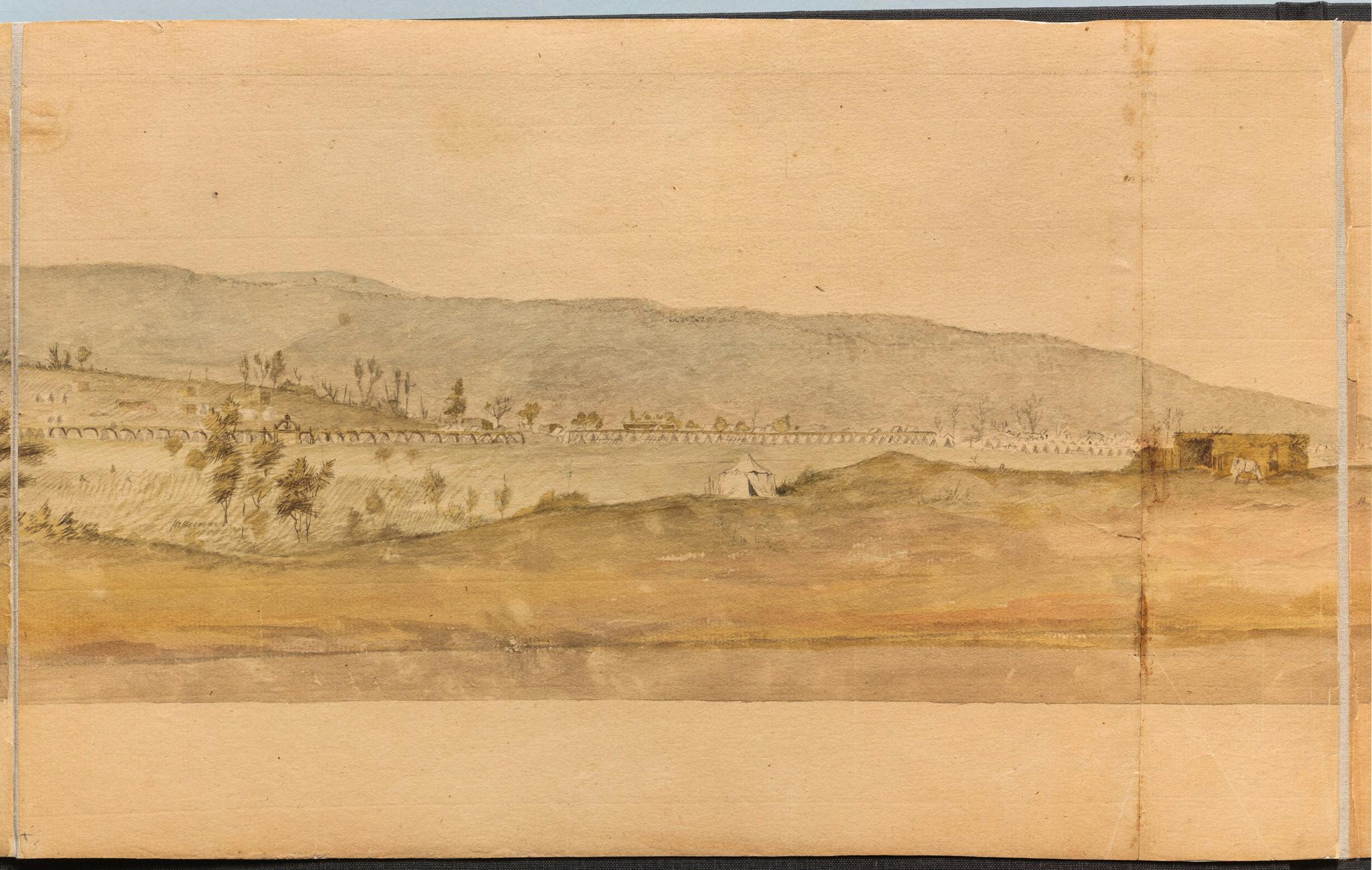Verplanck’s Point
Rhode Island Regiment
Take a closer look at the anchor-decorated colonnade of the Rhode Island Regiment. The Rhode Islanders’ tents were set up between the Massachusetts and Connecticut brigades. An officer’s marquee tent is visible in the foreground of this section of the painting.
Image: Museum of the American Revolution, Gift of the Landenberger Family Foundation

